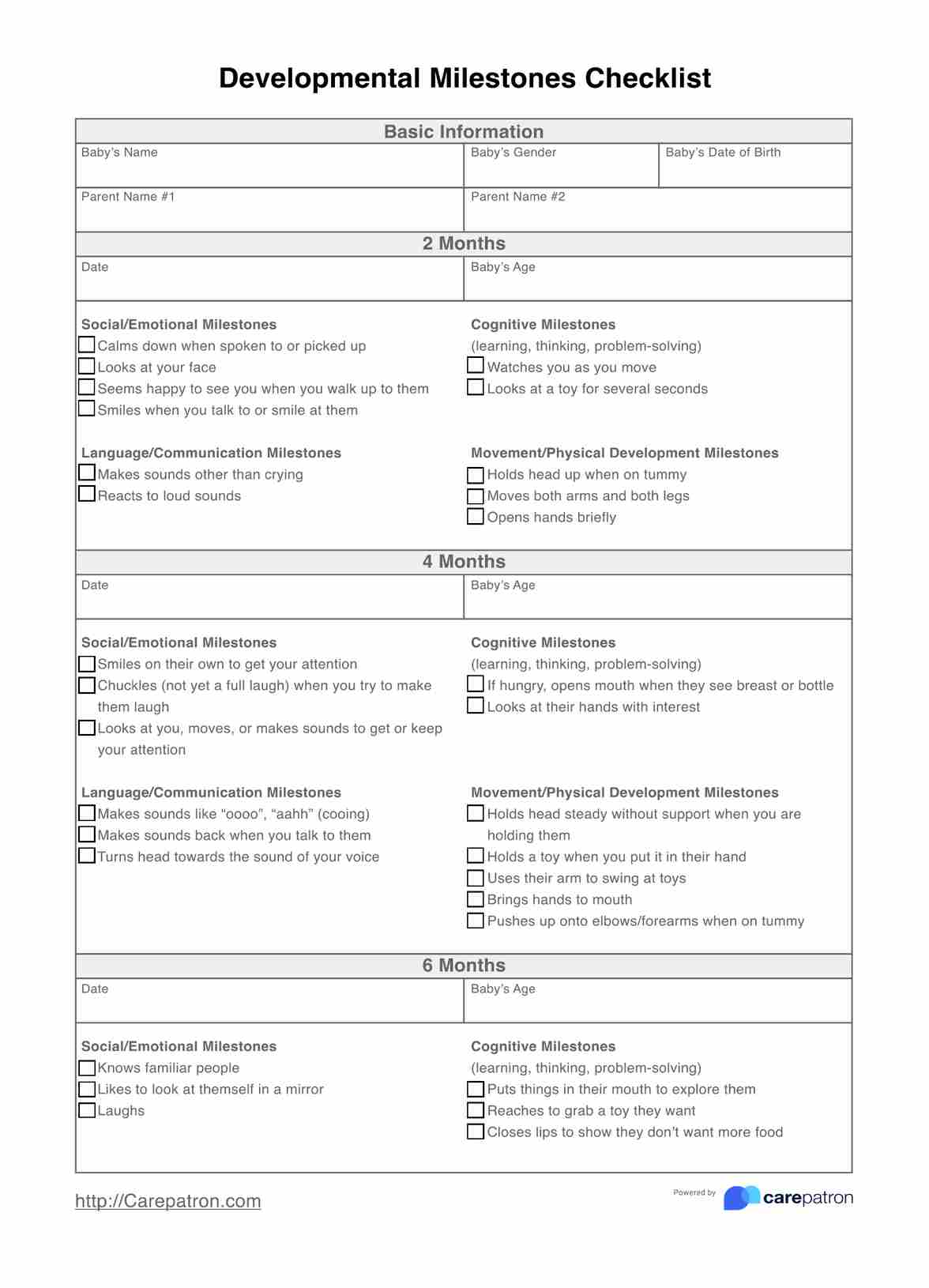This developmental milestones checklist can be used at many different stages of a baby’s development. In terms of when you should fill in this checklist, we recommend filling it in at or immediately after a visit with your patient and their infant. This ensures you don’t forget any of the checklist items discussed.

Developmental Milestones Checklist
Use our simple Developmental Milestones Checklist to monitor your littlest patient's development in their first 12 months, with check-ins at 2, 4, 6, 9, and 12 months.
Developmental Milestones Checklist Template
Commonly asked questions
Absolutely! However, as we have kept this a basic checklist tool, it’s important you ensure your patient understands that it is okay if their infant is not meeting all the developmental milestones at the set times as there is a wide range of what is considered normal development. Additionally, your patient should know who to contact should they have any concerns about their baby’s development.
The developmental milestones included in this checklist were created by the CDC (Center for Disease Control), a United States public health organization and part of the US government.
EHR and practice management software
Get started for free
*No credit card required
Free
$0/usd
Unlimited clients
Telehealth
1GB of storage
Client portal text
Automated billing and online payments











